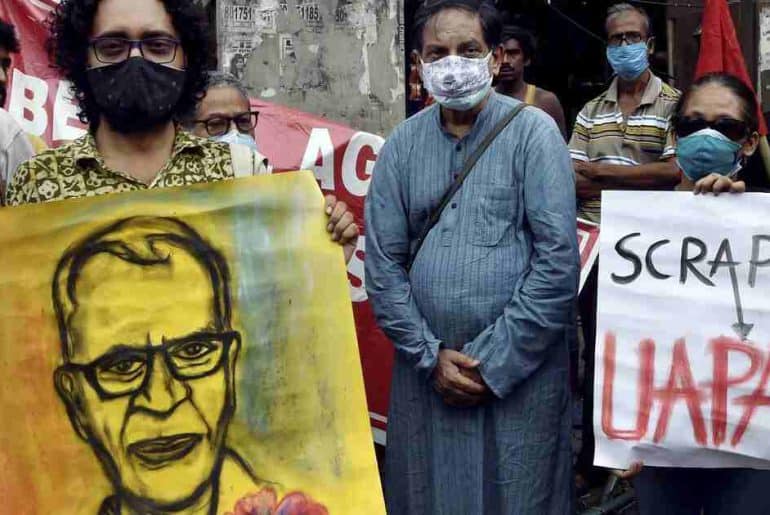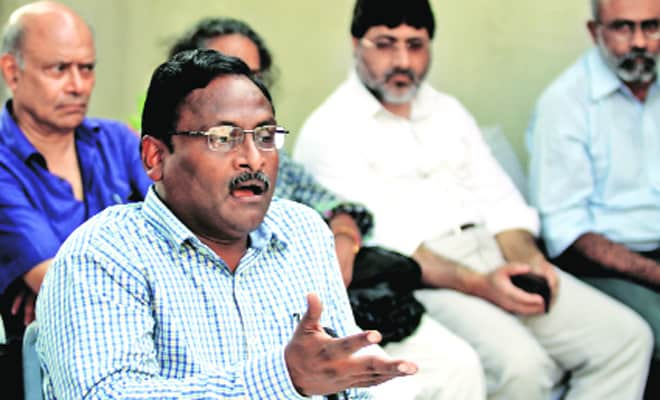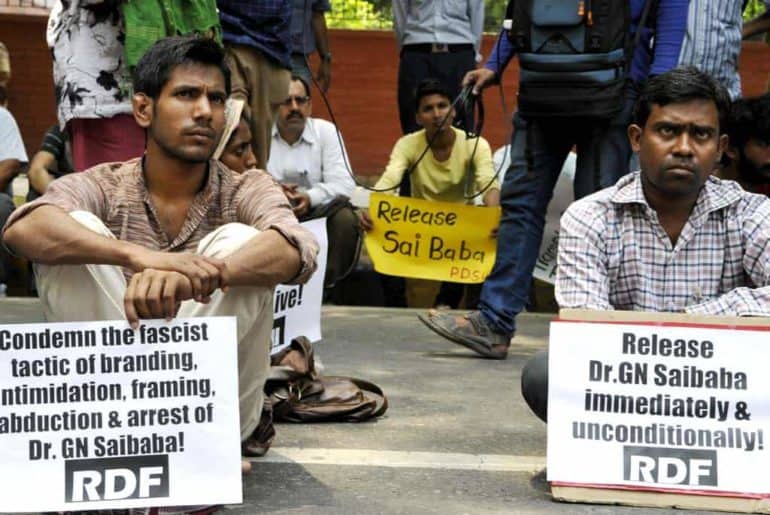With the recent acquittal of former Delhi University Professor G.N. Saibaba after a torturous 10 years of imprisonment under the Unlawful Activities Prevention Act (UAPA), we take a look at one of the most important tools in the market of India’s barely-there-democracy: the UAPA.
In the Athenian State of 621 BCE, lived a statesman named Draco. Draco prescribed death for all criminal offences. Laws that were written in blood, not ink. Think of the word ‘draconian’ named after this infamous statesman, but in the Indian context, and perhaps what comes to mind is the notorious Unlawful Activities (Prevention) Act (UAPA) of 1967.
Student activist Umar Khalid spent a total of three years behind bars in Tihar, with his bail pleas rejected consistently. The case moved from bench to bench. 84-year-old Stan Swamy, booked under the Bhima Koregaon case during his imprisonment, had asked for a sipper and straw in jail, citing Parkinson’s disease. It took the authorities a month to approve his request. On July 5, 2021, he passed away in jail, still awaiting trial. Journalist Siddique Kappan, on his way to cover the Hathras rape case, was arrested and detained similarly for a period of two years without trial.
What brings these cases together is UAPA. Stringent conditions for bails (the accused will not be given bail if the first impression of the court is that they are guilty), the ability to declare an individual ‘terrorist’, and detention without producing any incriminating evidence have ensured the overturning of the precept of innocent before proven guilty. The investigating agencies are allowed to take up to 180 days even to file a chargesheet, which, in the case of Kappan, he claims to never even have received firsthand.
The process thus becomes the punishment. The asymmetrical power balance between citizen and state is clearly exploited to the citizen’s disadvantage. Dissecting the acquittal judgement of Professor G.N. Saibaba, Karen Gabriel, and PK Vijayan write for The Quint that the law comprises both the set of legislation that the state has to enact and uphold as well as the rules of procedure that the state must adhere to while doing so. They assert, “Procedure is an invaluable protective measure, not an incidental convenience.”
A Brief History
In the year 1967, the Indira Gandhi administration sought to bring out a law against the secessionist activities that the government observed in the country. The Parliament thus passed the Unlawful Activities Prevention Act. What initially emerged as legislation to counter the problem of secessionist tendencies, however, would quickly assume an altogether different colour.
After the Prime Minister’s death and with the advent of the Punjab insurgency, the Terrorist and Disruptive Activities Prevention Act (TADA) was introduced. Criticised widely by human rights organisations for its arbitrary tendencies to centralise the onus of justice, it was later withdrawn. TADA trickled down in 2001 to POTA (the Prevention of Terrorism Act) in 2002, which met with concerns of misuse and was scrapped by the UPA government in 2004. The provisions of POTA, however, were in essence transferred onto the UAPA, which was the first introduction of anti-terrorism into the primarily anti-secessionist legislation. The central government could now overlook rules of evidence when it came to interception of communication and vested in its hands the power to declare any organisation as a terrorist organisation without trial.
In 2008, the Act was further amended to include longer police custody, longer jail time, and harder bail provisions. The latest and most important amendment in 2019 empowered the NIA further and gave the government powers to declare individuals terrorists.
But It Works, Right?
The hardlined stringency should then naturally warrant efficiency in curbing the “disturbances” that it claims to protect us from. The Home Ministry’s 2020 report, on the other hand, tells us that only 212 of the 24000 convicted in UAPA cases in 2016–2020 were found guilty. As Kappan puts it, “a conviction rate of less than 3%.”
Acquitting DU professor G. N. Saibaba, who has been in prison for 3600 days, the Bombay High Court noted:
No evidence has been led by the prosecution by any witness to any incident, attack, act of violence, or even evidence collected from some earlier scene of offence where a terrorist act has taken place, in order to connect the accused to such an act…
The court further stated that there had been an evident “failure in justice” in the flouting of mandatory provisions in Saibaba’s case. The appalling conditions of his imprisonment, along with those of many others, lead one to wonder whether the crushing impact that callous state persecution has on an individual’s life can ever be undone with mere acquittal.
The persecution of intelligentsia, which asks difficult questions of institutions, is no new phenomenon. Considering, however, that as we function under that nimble concept of what is known to some of us as a democracy, the state would do well to clothe its atrocities better and be less conspicuous about them. The UAPA, with its in-your-face authoritarian tendencies, does not seem to be helping in that front.
Read also: The Donkey Dance of UAPA: Criminalising Dissent in a Hollowing Democracy
Deevya Deo
[email protected]




